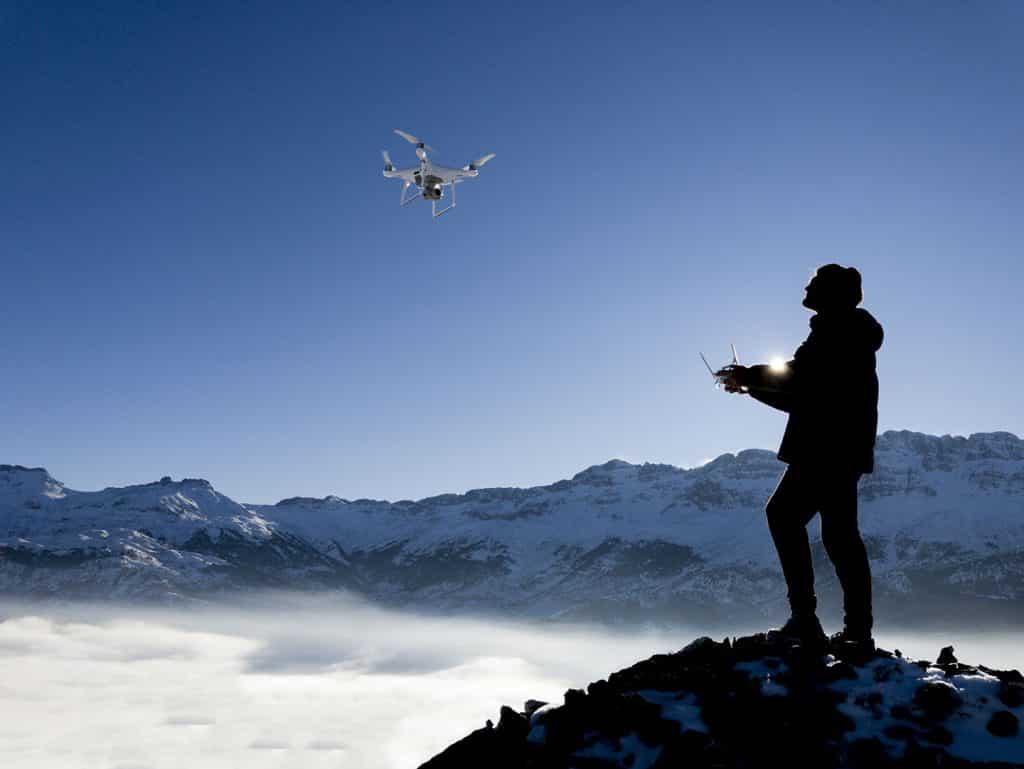
As we now move towards the winter months, you may wish to be mindful of how the alteration in weather conditions can impact your flight performance. Weather can be unpredictable, and it’s possible that you will encounter rain, fog, or even snow during a flight. So how can you have a safe flight and capture great shots during the next few months? Below we have outlined some top tips to keep in mind when flying your drone during winter.
Battery
Many drones use Lithium Polymer (LiPo) batteries. Cold temperatures can put your batteries out of their comfort zone, decreasing the chemical activity within batteries. It is therefore recommended that you only use fully charged batteries and prior to your flight hover for about a minute to allow the battery to warm up. Throughout your flight, only push the control sticks gently to prevent any battery voltage drops and always keep an eye on your drone battery status.
Stay Warm
Flying a drone throughout autumn and winter can be a very cold experience due to the fact that you are normally standing still throughout your flight. Ensure that you dress appropriately – i.e. wear gloves that are warm but still allow the requisite manoeuvrability to fly the drone. You will also need to control your phone or tablet, so gloves with no fingertips are ideal.
As well as keeping yourself warm it is important that you keep your batteries and mobile device warm. As mentioned previously, cold temperatures can shorten a LiPo batteries life.
Moisture
Winter is full of airborne moisture with the regular occurrence of rain, fog and snow – none of which are particularly friendly to the motors or sensitive electronics on your drone. You will also have to deal with moisture on the lens and your phone/tablet screen. Do not fly through fog as you will lose visual line of sight. If you encounter rain or snow, land immediately. Lastly, be mindful of where you take off and land, as the propellers can kick up a fair amount of snow when they’re near the ground.
Propeller Icing
Especially in the UK, you may think that icing won’t happen but in colder temperatures, there is a possibility. It doesn’t have to be below 0 degrees to happen either. Icing is where there’s a build-up of ice on the propellers during flight which can result in prop damage and in extreme cases, a drone crash. Icing occurs due to a combination of cold temperatures and moisture in the air.
Flying in clouds or mist, combined with temperatures below 5 degrees may cause a build-up of ice. It can occur above 0 degrees due to the high speed of the propeller reducing the temperature. Monitor your drone during flight and if you suspect icing is occurring, land immediately and dry your aircraft.
Plan Your Flight & Transportation
Preparation is key whenever you fly you drone; however it is particularly important when flying in winter. First of all, plan your flight location before you travel in the cold with your drone. Make an image or video shot list and know what you need before take-off. Try and avoid flying in difficult locations such as over water as you may need to land your aircraft at short notice if the temperature drops or it starts raining.
Pack the aircraft and batteries in an insulated case when possible to keep the heat in. During transport, keep the equipment in the warmest place available. When you arrive at your location, keep the batteries in pockets close to your body rather than in a cold case.
Keep the weight of your aircraft to a minimum by avoiding any additions you don’t need. This will help give you the maximum out of the aircraft’s batteries in the cold weather.
Prior to your flight, ensure that you have gone through your pre-flight checklist. Carefully check your propellers for any damage as the cold weather will put extra pressure on them. If there’s even minor damage, do not use them.
If you are prepared for your flight, it will help you avoid difficult situations and unnecessary pressure that adverse weather may cause.
